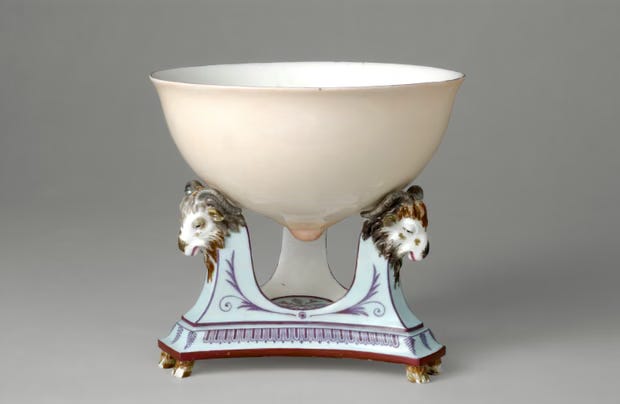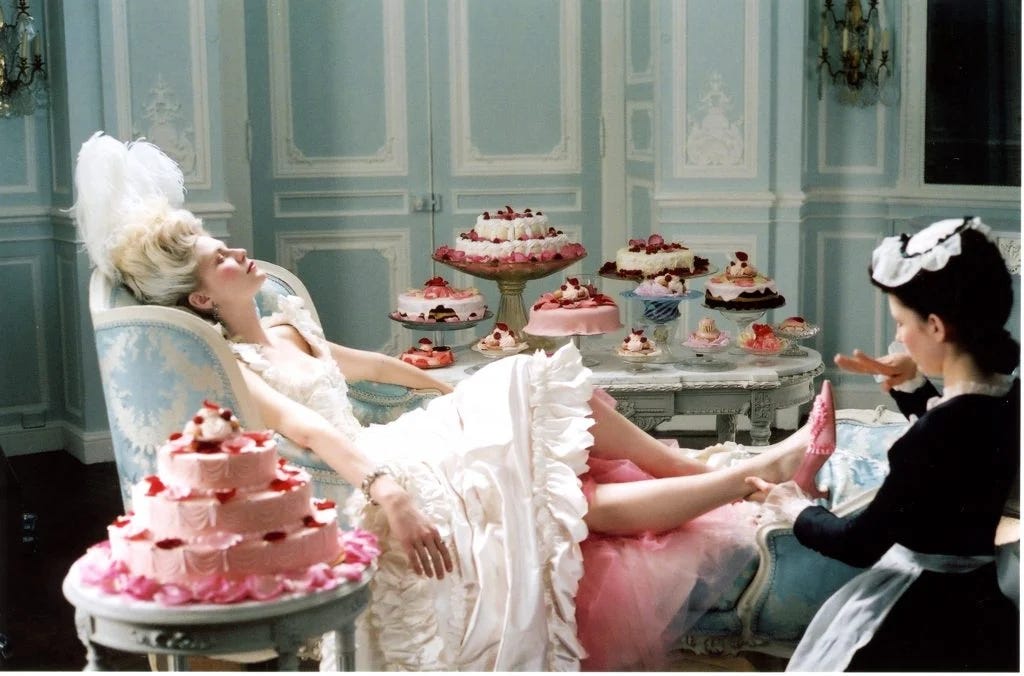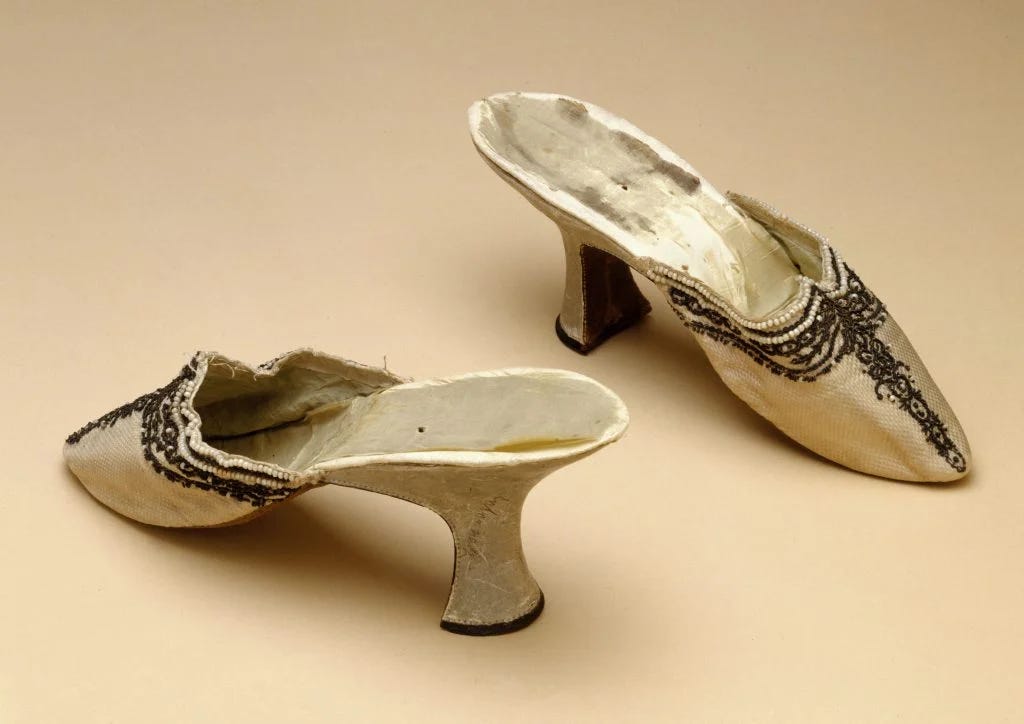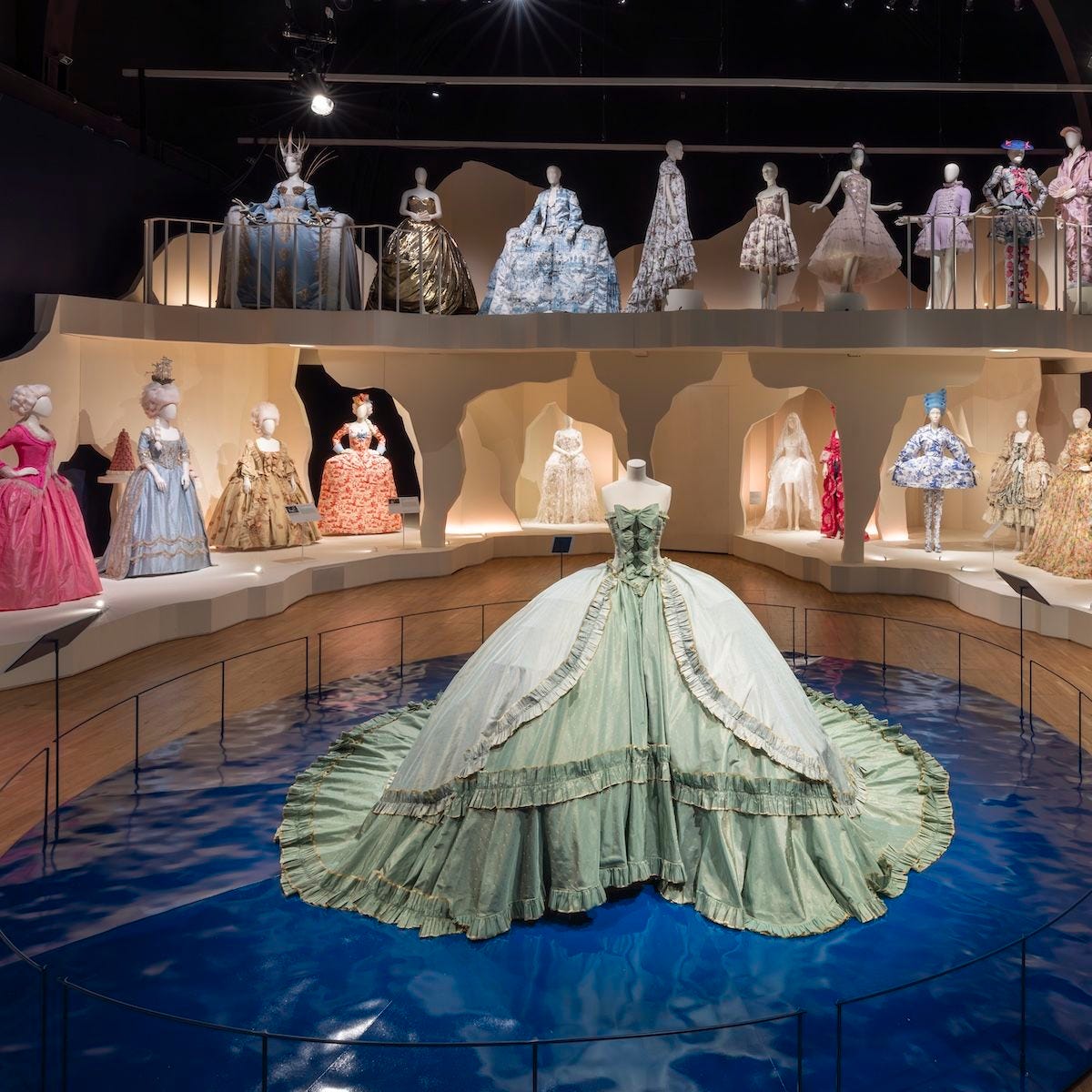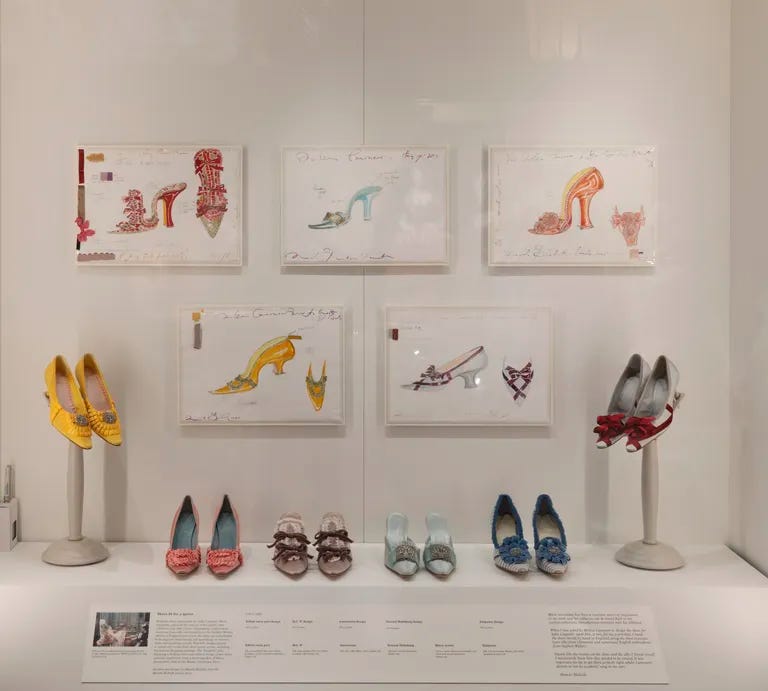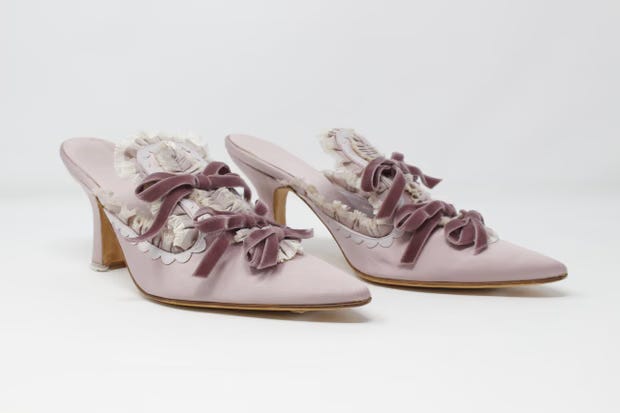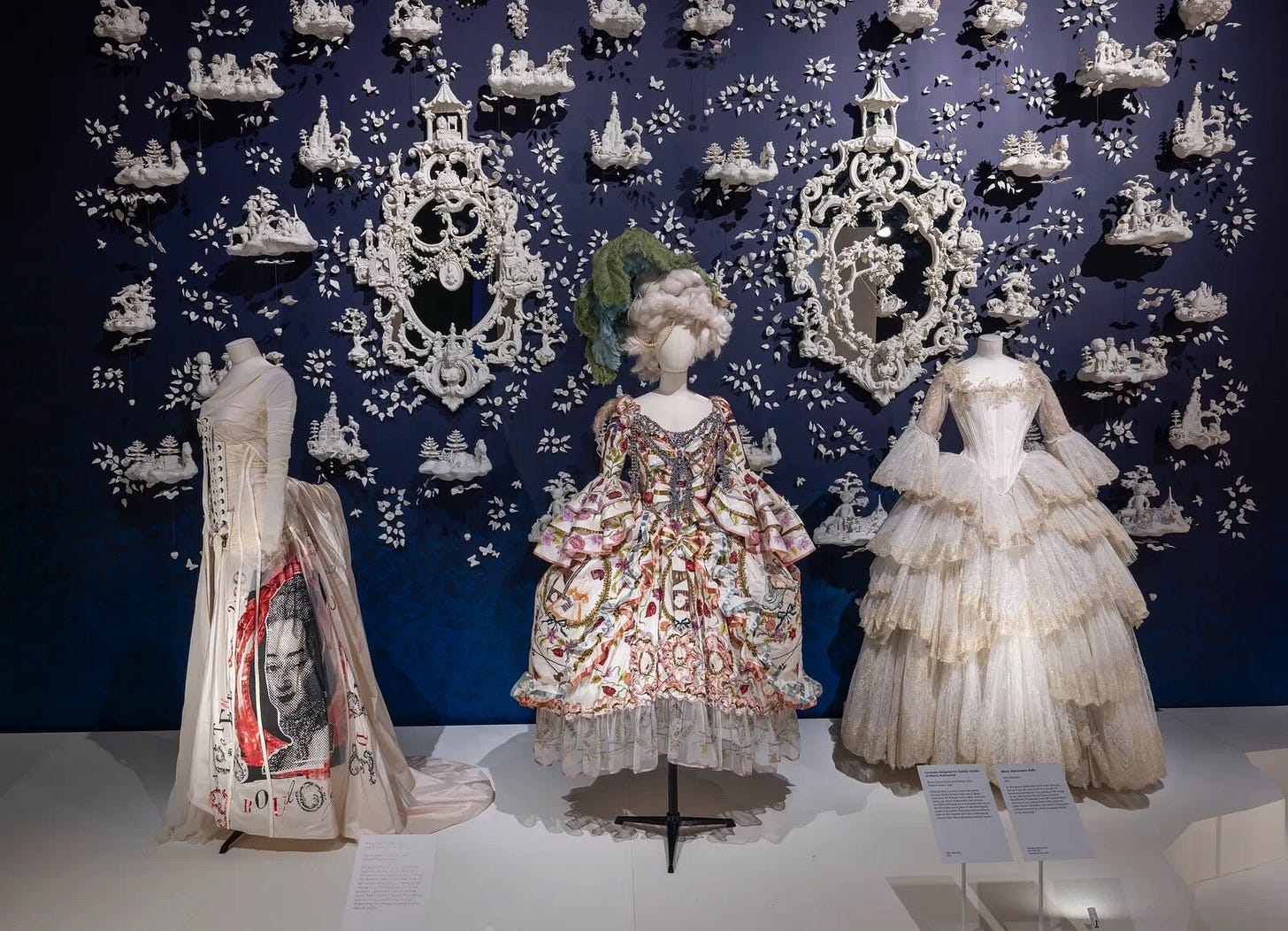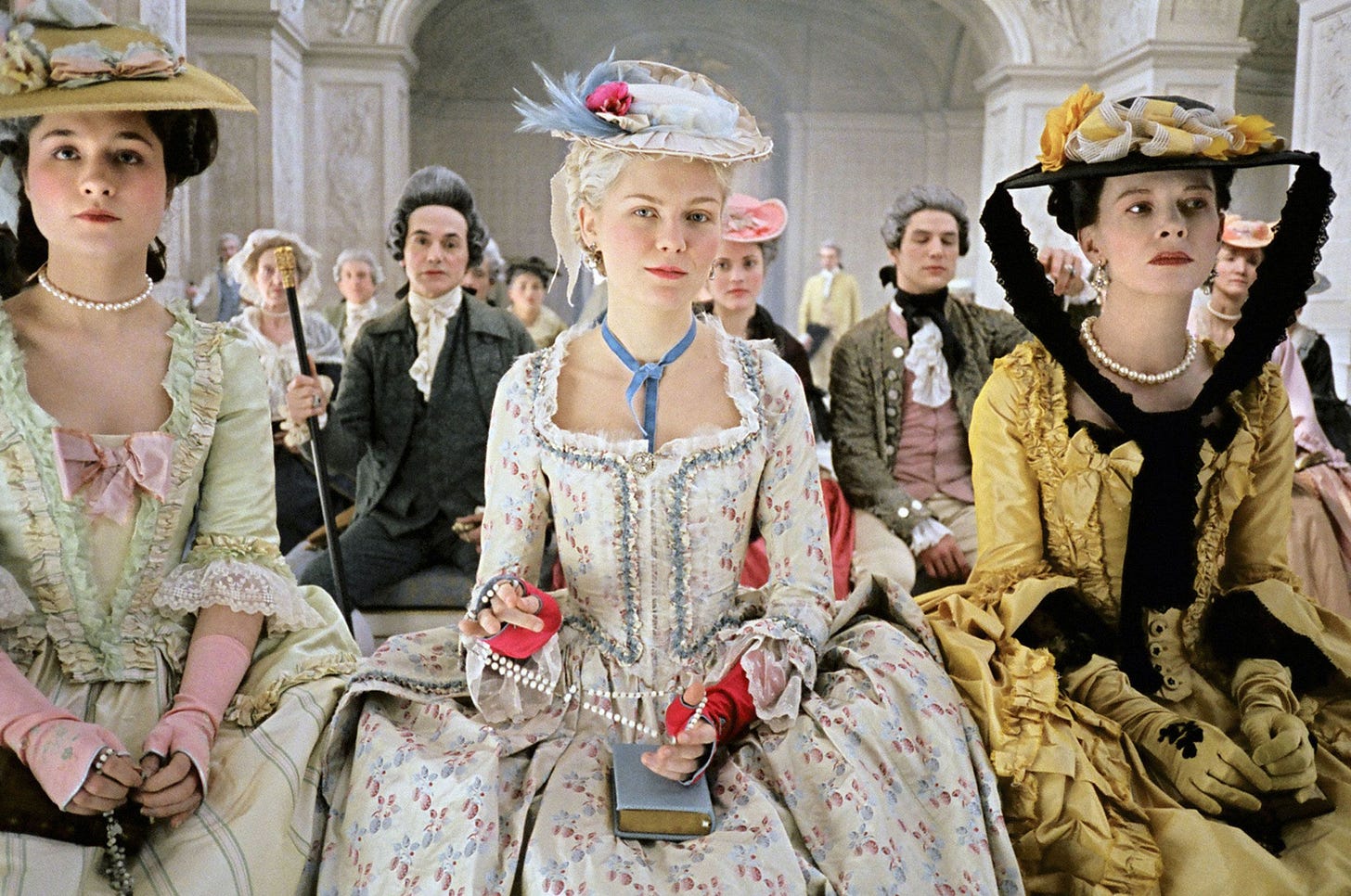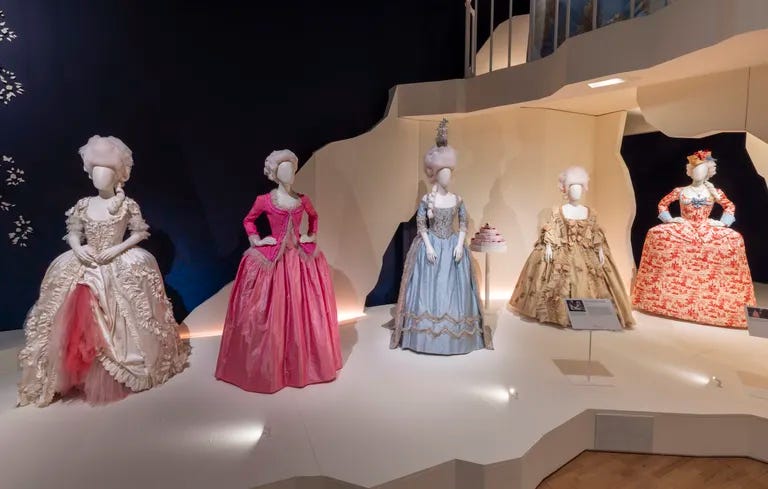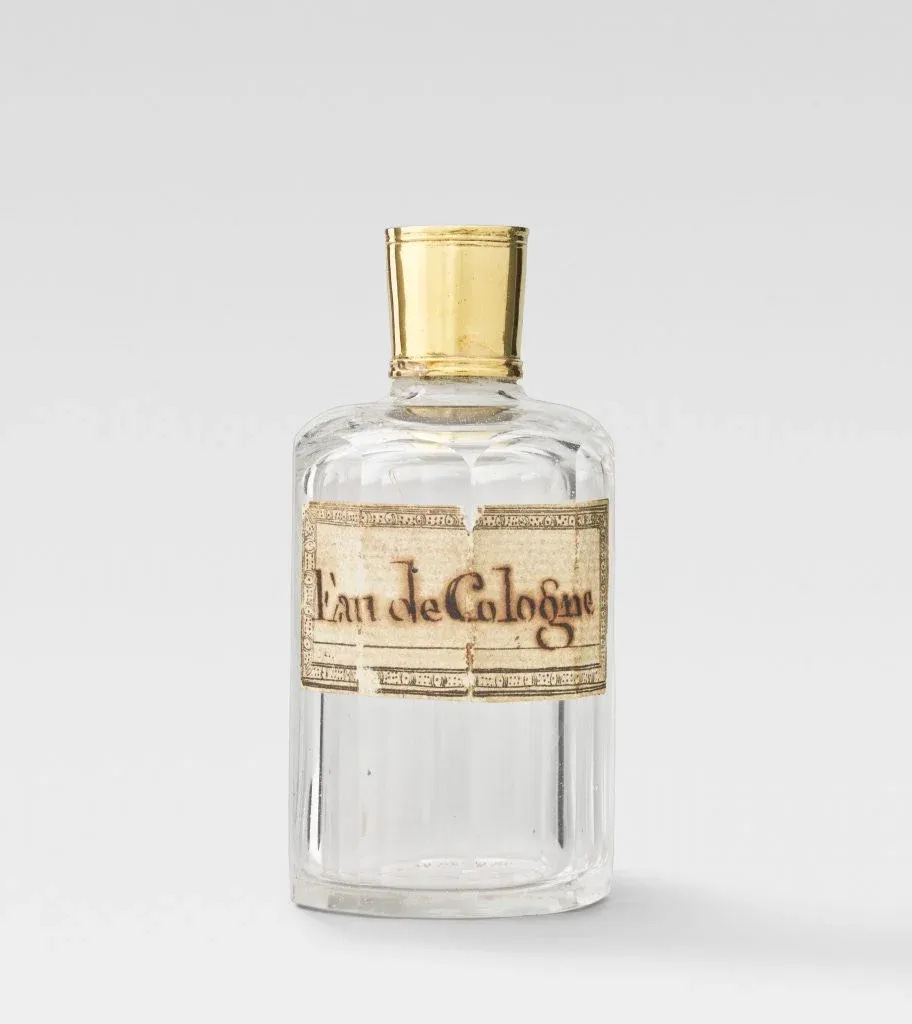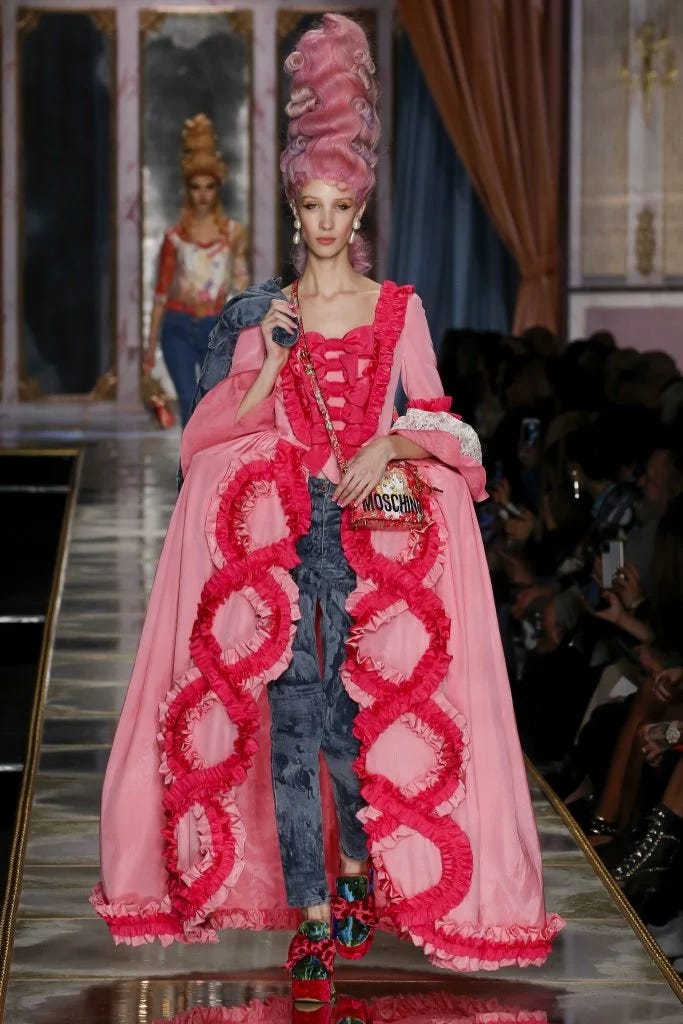Marie Antoinette: The Style of Fantasy
At the Victoria & Albert Museum
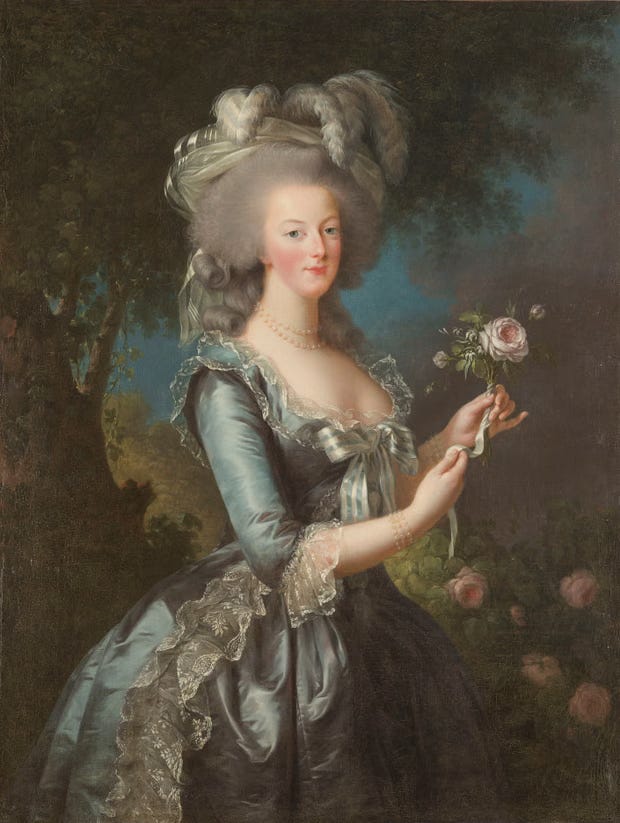
Marie Antoinette was certainly the most powerful fashion influencer in history as well as the most fashionable, theatrical, and lavish queen. Everything about her style and about the way she pictured the world was extravagant and extreme: the vertiginous hairstyle, the silhouettes, and the endless workmanship that it took to create each one of her garments. Her style was no less controversial than her own personality. Nevertheless, her ostentatious style has come to capture the imagination of fashion designers for 250 years. Now that her legacy and impact on fashion and style are explored and presented in a new exhibition, Marie Antoniette Style at the Victoria and Albert Museum, it is time to remember that Marie Antoinette’s style has had a lasting influence.
The ambitious exhibition consists of garments and objects owned by Marie Antoinette herself, taking the viewer on a chronological journey revealing her influence and demonstrating that her style came back over and over again in numerous revivals. In the first section, the queen’s personal dresses, silk slippers, jewels, and even the final note she wrote before being executed, start to build the basis of the show. We learn how she loved wearing chokers, but also that she loved taking risks. It then follows the history of fashion and style, demonstrating the impact of her style and inspiration to this day, as seen in dresses by such fashion houses as Moschino, Dior, Chanel, Erdem, Vivienne Westwood, Valentino, when blurring the boundaries between fantasy and reality. The show is further enriched by costumes made for screen, such as the shoes designed by Manolo Blahnik for Sofia Coppola’s Oscar winning Marie Antoinette starring Kirsten Dunst.
The anticipated exhibition Marie Antoninette Style is the hottest exhibition of the season and the ultimate embodiment of the so-called blockbuster exhibition. Those museum shows, which tend to emphasize effects, dramatic presentations, brining emotions to the museum space, and memorable experiences, which have recently become controversial. The blockbuster show has come to generate new records with high ticket prices that often exclude potential lower-income visitors, and they tend to be constantly overcrowded. This exhibit was crowded, but more importantly, it is too large and too long to see at all once, so the message can become lost by the time you arrive at the end. A second visit is required in order to fully comprehend the show. Most people cannot absorb that much information at once. The exhibition provides an amazing visual experience that is filled with textures, colors, and the most magnificent garments.
The first section takes us from the heyday of the 1770s to Marie Antoinette’s tragic execution in 1793, where her elaborate lifestyle and fashion sense is fully presented through fashion, furniture, jewelry, porcelain, and musical instruments. The second section titled Marie Antoinette Memorialised: The Birth of a Style Cult takes us to the first revival, exploring the style during the Victorian era when a romanticized interest in the queen had taken place in the light of Victorian fashion. The final section, however, was exciting and interesting enough that it could hold an entire exhibition in its own right. Titled Marie Antoinette Re-Styled, it reveals how the fashion myth has been carried into the 20th and the 21st centuries in fashion, performance, and pop culture. She had no political power, so she took the power of style to the ultimate expression while supporting new technologies and the guilds. She embraced the spirit of the enlightenment when it came to children and motherhood, which are contextualized in the show, revealing the woman behind the persona.
All images curtesy V&A.
